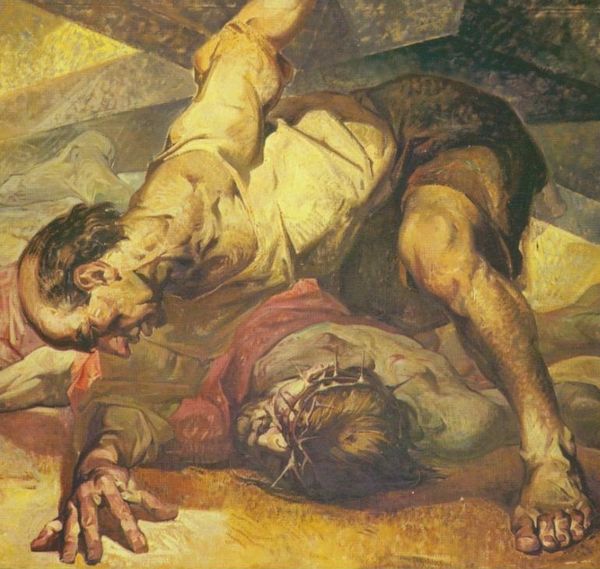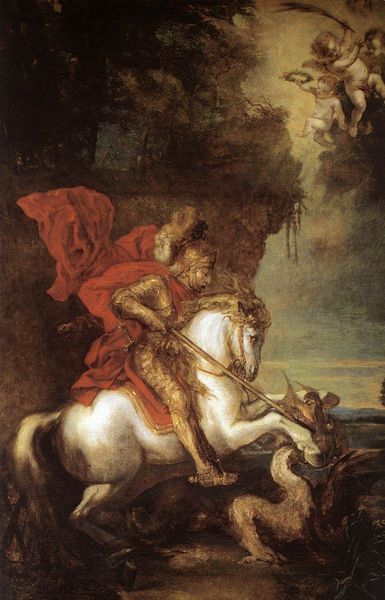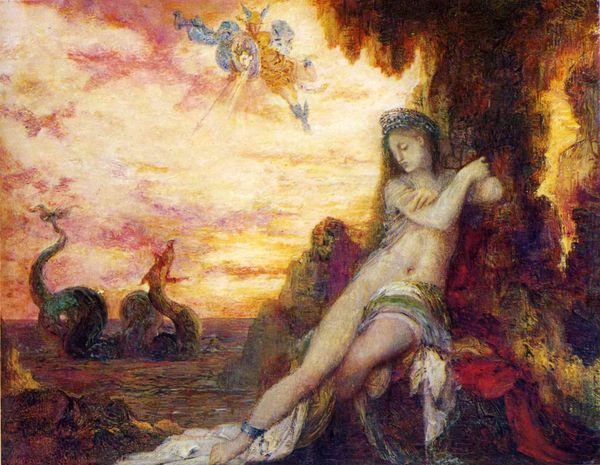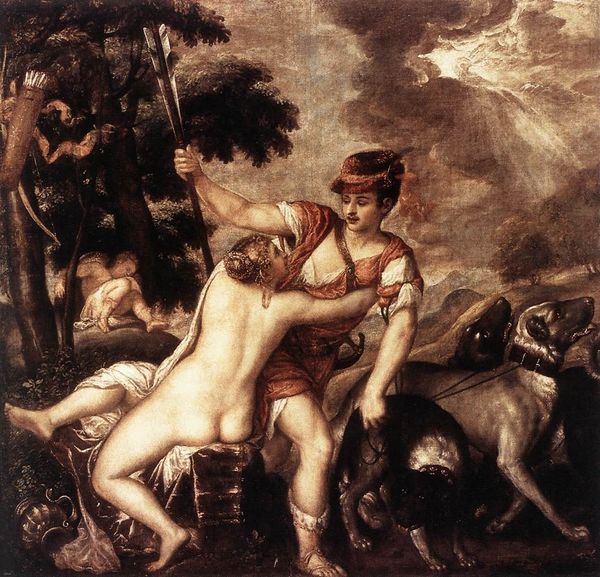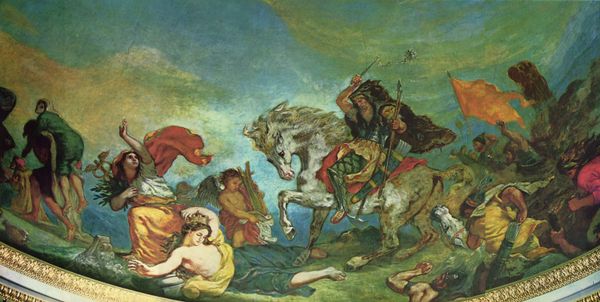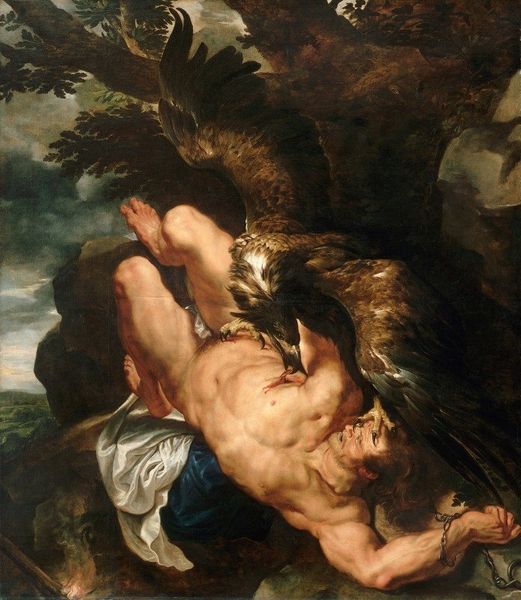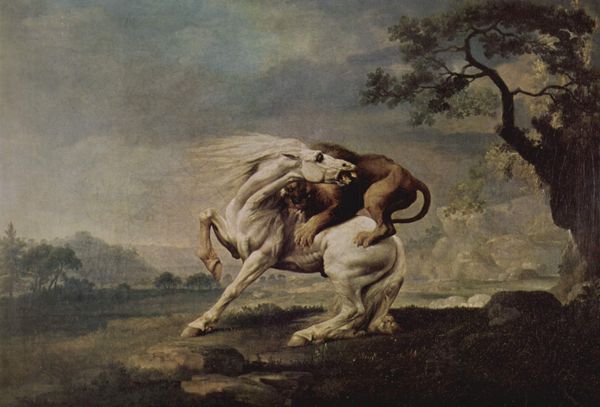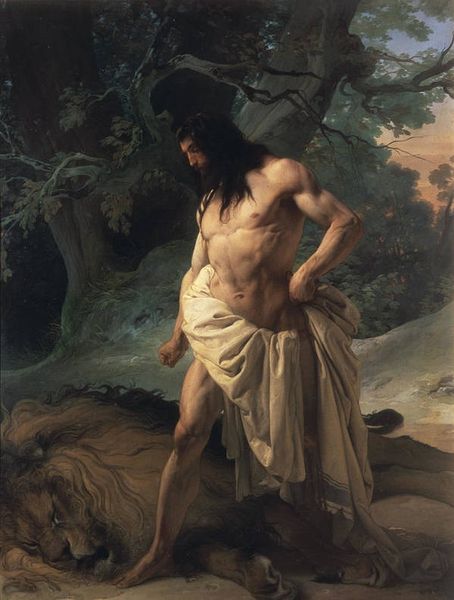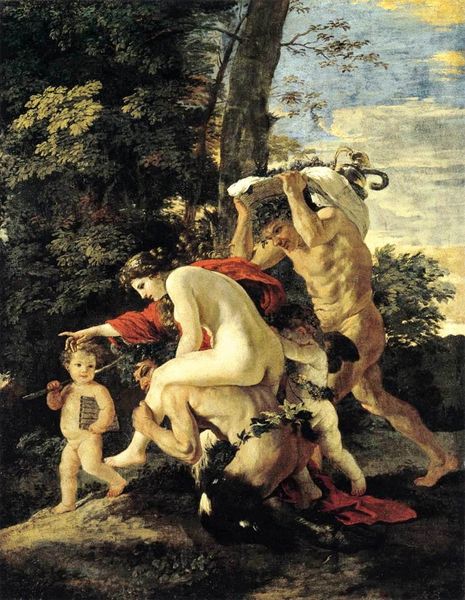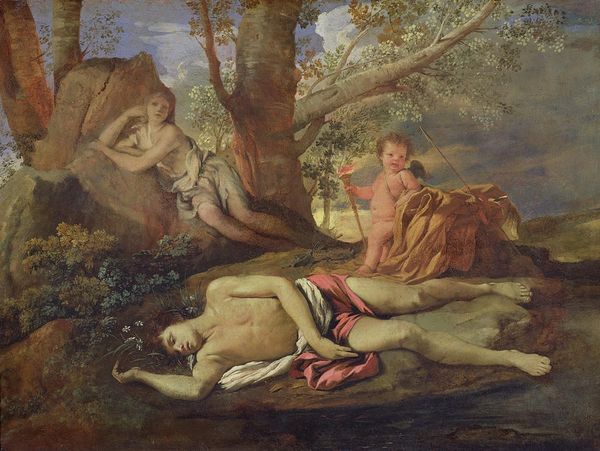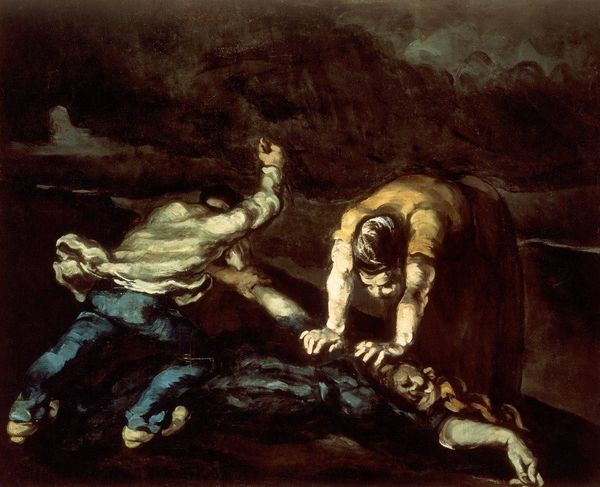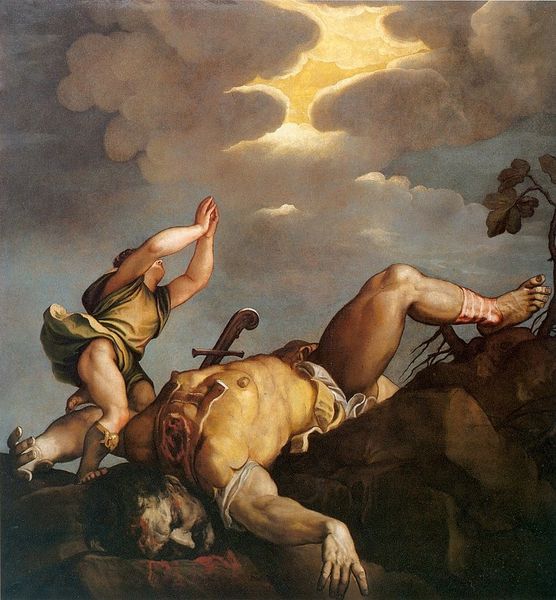
Copyright: Public domain
Editor: This is Lawrence Alma-Tadema’s *The Death of Hippolytus*, painted in 1860. It’s an oil painting showing a dramatic, almost theatrical scene. What strikes me most is the chariot; it seems to be made of expensive materials and is so intricately detailed compared to everything else. How do you interpret this work? Curator: Looking at it through a materialist lens, I see an emphasis on the process of creation and the economic factors involved. The chariot’s grandeur contrasts sharply with the brutal demise of Hippolytus. Think about the labor involved in its production—the mining of the ore, the smithing, the carving of the wood, the application of gold leaf…who benefited from all this material production? Editor: That’s a really interesting point! It seems almost vulgar to have such a lavish object at the center of this tragedy. So the contrast draws our attention to that exploitation? Curator: Precisely! Alma-Tadema, known for his depictions of luxury, seems to be subtly critiquing the society that consumed these objects. Even the pigments in the oil paint themselves tell a story of global trade and access to resources. Editor: It's not just about aesthetics, but about the whole network of labour and trade behind it. Curator: Exactly. This opulent chariot, in the context of death, encourages us to question the value systems and the social hierarchy. Does this resonate with you now that we consider these economic and material conditions? Editor: Absolutely! I always focused on the mythological narrative before. Now, I see the painting as a social commentary. Curator: It's a shift from idealizing the past to understanding the material realities that underpinned it. I am happy you understand how important the context around material is to appreciate it.
Comments
No comments
Be the first to comment and join the conversation on the ultimate creative platform.

